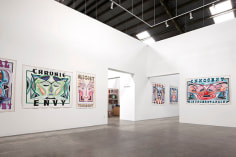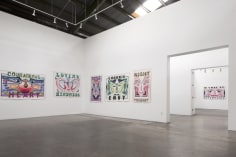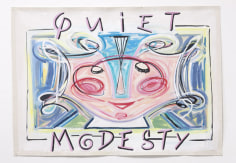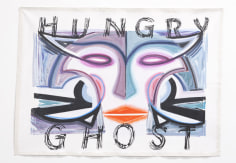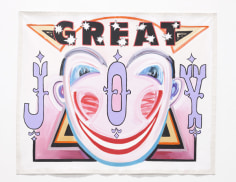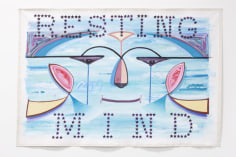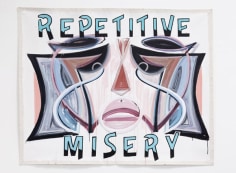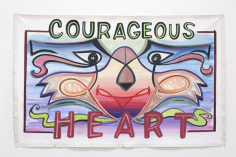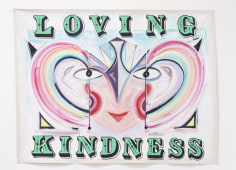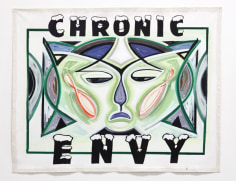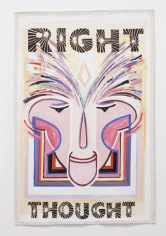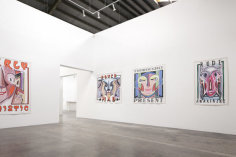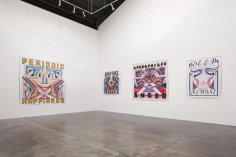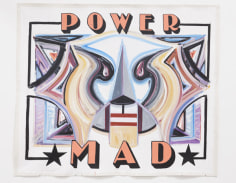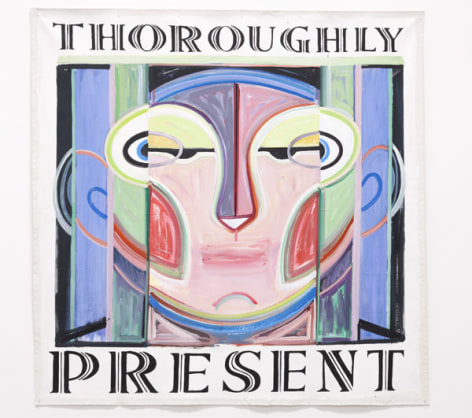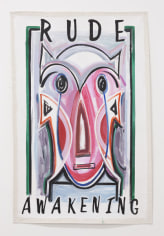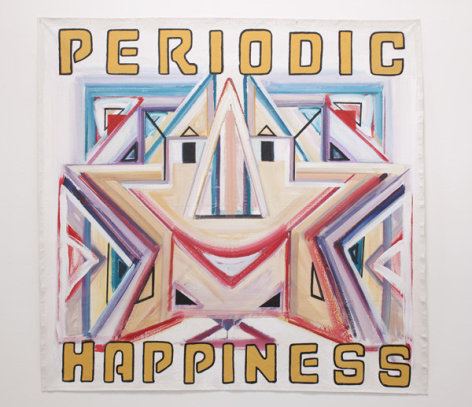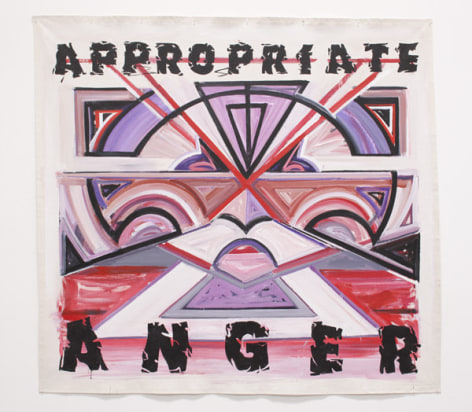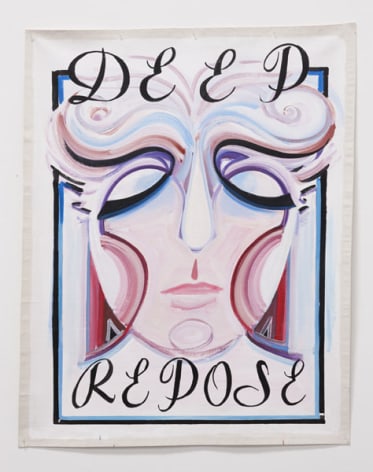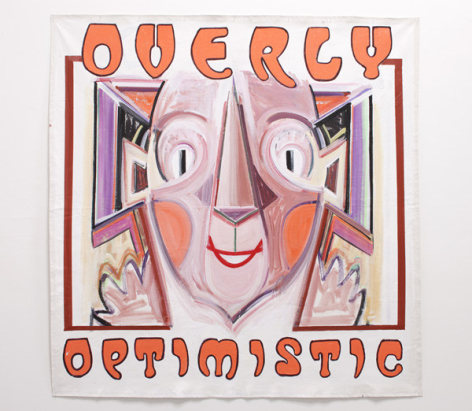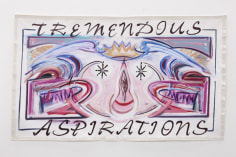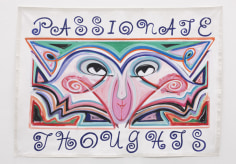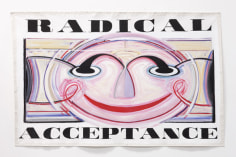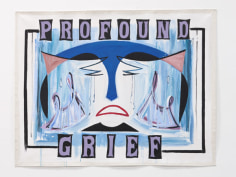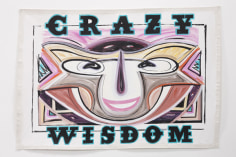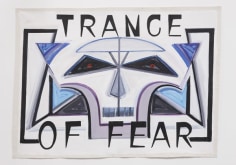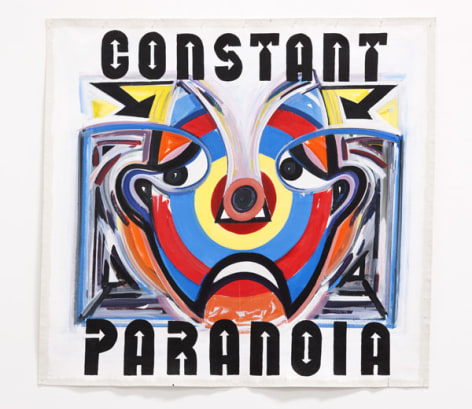Rosamund Felsen Gallery is pleased to present La Condition Humaine, the eighteenth solo exhibition at our gallery by Los Angeles- and Montana-based artist Karen Carson. For this show, Carson continues to investigate how models of painting (and image-making) align with models of subjectivity, taste and criticism.
Employing components of various pictorial languages, most notably the punchy graphics of circus and carnival signage along with nods to modernist and pop-era practices, Carson’s La Condition Humaine presents a confounding series of colorful, banner-like paintings on canvas. Each work depicts a large face coupled with a phrase or term. While these works–with titles like “Chronic Envy,” or “Repetitive Misery”–look something like signs for carnival attractions, they operate as prompts, where the viewer, having a job to do, considers how the words relate to, or divert from, the abstracted faces. Can anything be “read” into these relationships between words and pictures? And does a title/caption/phrase make the job any easier? These works share something with the work of the advertising sloganeer, using language+image to tap into desires before they can be verbalized (or even recognized). The words here, painted in large, kitschy typeface, induce a strange conflation then, where the text references itself at the same time that it references something completely non-verbal, perhaps psychological. And this is where Carson’s deft painting skills and sly humor take effect. These works are as multi-faceted as a Braque painting; faces are circus clowns and art historical homage. Carson’s work isn’t a critique of popular culture (circus that it is), but in fact is motivated by reverence for our emotional connection to images of all strata.

